Resume Formats
Choose the best resume format for a resume to showcase your skill, education and experience. We guide you to how to choose the best resume format that matches your skills and increase the chances of getting shortlisted.
1000+ Reviews on Trustpilot

Resume Formats
Choose the best resume format for a resume to showcase your skill, education and experience. We guide you to how to choose the best resume format that matches your skills and increase the chances of getting shortlisted.
1000+ Reviews on Trustpilot

Resume Formats
Choose the best resume format for a resume to showcase your skill, education and experience. We guide you to how to choose the best resume format that matches your skills and increase the chances of getting shortlisted.
1000+ Reviews on Trustpilot


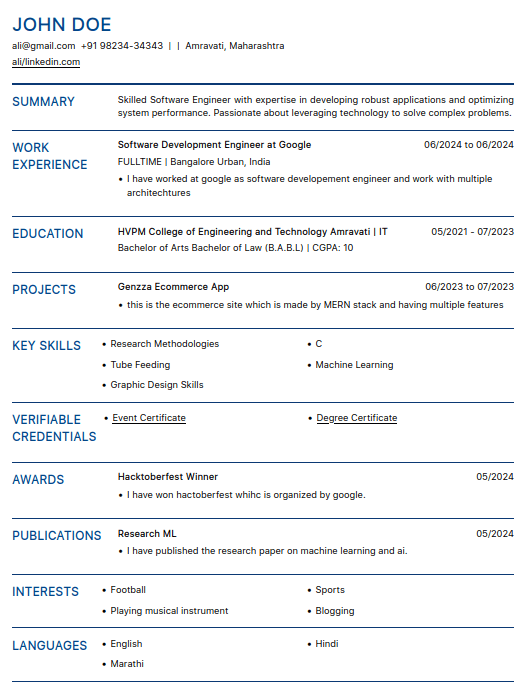
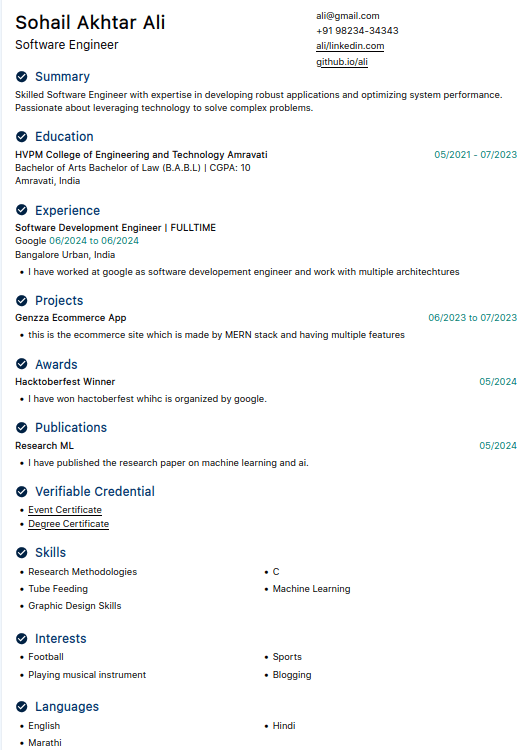
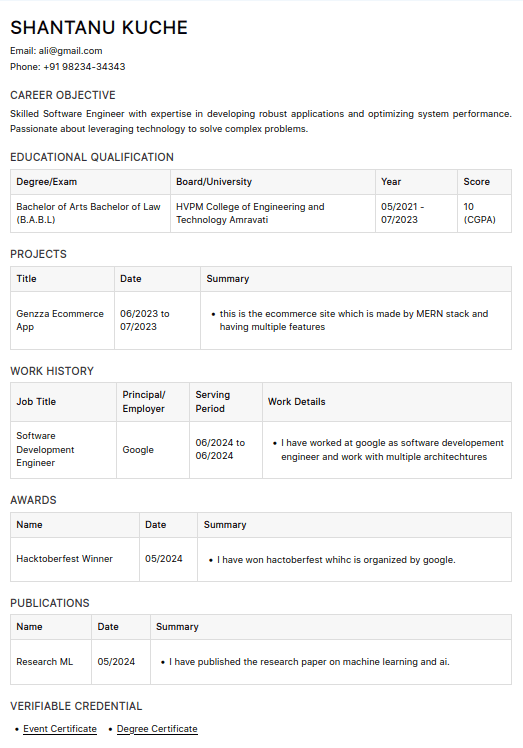
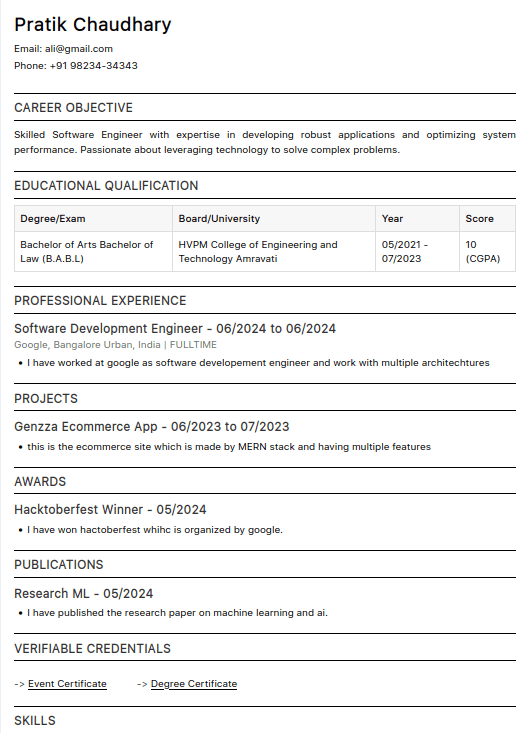
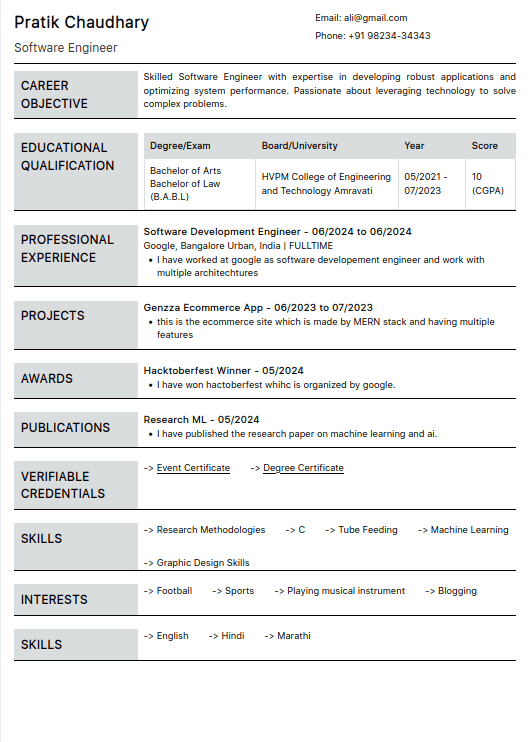












Your resume is your personal marketing document, and choosing the right format is essential for presenting your skills and experiences in the best possible light. With the right format, you can make a powerful impression on potential employers and increase your chances of landing an interview. This guide will explore the three main resume formats—chronological, functional, and combination—detailing when and how to use each one.
Your resume is your personal marketing document, and choosing the right format is essential for presenting your skills and experiences in the best possible light. With the right format, you can make a powerful impression on potential employers and increase your chances of landing an interview. This guide will explore the three main resume formats—chronological, functional, and combination—detailing when and how to use each one.
Your resume is your personal marketing document, and choosing the right format is essential for presenting your skills and experiences in the best possible light. With the right format, you can make a powerful impression on potential employers and increase your chances of landing an interview. This guide will explore the three main resume formats—chronological, functional, and combination—detailing when and how to use each one.
1. Chronological Resume Format
The chronological resume format is the most widely used and is often the preferred choice for job seekers with a solid work history in their field.
Structure:
Contact Information: Your name, phone number, email address, and LinkedIn profile.
Professional Summary or Objective: A brief statement highlighting your career goals or summarizing your professional achievements.
Work Experience: Listed in reverse chronological order, starting with your most recent position. Each entry should include your job title, company name, location, and employment dates, followed by bullet points describing your responsibilities and achievements.
Education: Your academic background, including degrees, institutions, and graduation dates.
Skills: A list of relevant technical and soft skills.
Certifications/Awards (Optional): Any additional certifications, licenses, or awards that are relevant to the job.
When to Use:
You have a consistent work history with few or no gaps.
You’re applying for a position in the same field as your previous jobs.
You have a progressive career path with increasing responsibilities.
Advantages:
Easy to follow and familiar to recruiters.
Clearly shows career progression and work history.
Ideal for showcasing a strong professional background.
Disadvantages:
Not suitable if you have employment gaps or if you're changing careers.
It might highlight a lack of relevant experience if you’re transitioning to a new field.
1. Chronological Resume Format
The chronological resume format is the most widely used and is often the preferred choice for job seekers with a solid work history in their field.
Structure:
Contact Information: Your name, phone number, email address, and LinkedIn profile.
Professional Summary or Objective: A brief statement highlighting your career goals or summarizing your professional achievements.
Work Experience: Listed in reverse chronological order, starting with your most recent position. Each entry should include your job title, company name, location, and employment dates, followed by bullet points describing your responsibilities and achievements.
Education: Your academic background, including degrees, institutions, and graduation dates.
Skills: A list of relevant technical and soft skills.
Certifications/Awards (Optional): Any additional certifications, licenses, or awards that are relevant to the job.
When to Use:
You have a consistent work history with few or no gaps.
You’re applying for a position in the same field as your previous jobs.
You have a progressive career path with increasing responsibilities.
Advantages:
Easy to follow and familiar to recruiters.
Clearly shows career progression and work history.
Ideal for showcasing a strong professional background.
Disadvantages:
Not suitable if you have employment gaps or if you're changing careers.
It might highlight a lack of relevant experience if you’re transitioning to a new field.
1. Chronological Resume Format
The chronological resume format is the most widely used and is often the preferred choice for job seekers with a solid work history in their field.
Structure:
Contact Information: Your name, phone number, email address, and LinkedIn profile.
Professional Summary or Objective: A brief statement highlighting your career goals or summarizing your professional achievements.
Work Experience: Listed in reverse chronological order, starting with your most recent position. Each entry should include your job title, company name, location, and employment dates, followed by bullet points describing your responsibilities and achievements.
Education: Your academic background, including degrees, institutions, and graduation dates.
Skills: A list of relevant technical and soft skills.
Certifications/Awards (Optional): Any additional certifications, licenses, or awards that are relevant to the job.
When to Use:
You have a consistent work history with few or no gaps.
You’re applying for a position in the same field as your previous jobs.
You have a progressive career path with increasing responsibilities.
Advantages:
Easy to follow and familiar to recruiters.
Clearly shows career progression and work history.
Ideal for showcasing a strong professional background.
Disadvantages:
Not suitable if you have employment gaps or if you're changing careers.
It might highlight a lack of relevant experience if you’re transitioning to a new field.
2. Functional Resume Format
The functional resume format emphasizes your skills and abilities rather than your work history. It’s a great option for job seekers who have gaps in their employment, are changing careers, or have a diverse work background.
Structure:
Contact Information: Your name, phone number, email address, and LinkedIn profile.
Professional Summary or Objective: A statement that highlights your career goals or summarizes your skills and experiences.
Skills Summary: A comprehensive section listing your key skills, grouped by category (e.g., “Project Management,” “Customer Service,” “Technical Proficiency”). For each skill, provide bullet points detailing how you’ve applied it in previous roles.
Work Experience: A brief listing of your job titles, company names, and employment dates. Detailed descriptions are not necessary here.
Education: Your academic background, including degrees, institutions, and graduation dates.
Certifications/Awards (Optional): Any relevant certifications, licenses, or awards.
When to Use:
You’re changing careers and want to focus on transferable skills.
You have gaps in your employment history.
You have diverse work experiences that don’t follow a linear career path.
Advantages:
Highlights skills and abilities over job titles and dates.
De-emphasizes gaps in employment history.
Allows for a focus on transferable skills relevant to a new career path.
Disadvantages:
Less familiar to recruiters and can be seen as less straightforward.
May raise questions about work history if dates and job titles are minimized.
Not ideal for those with extensive and consistent work experience in one field.
2. Functional Resume Format
The functional resume format emphasizes your skills and abilities rather than your work history. It’s a great option for job seekers who have gaps in their employment, are changing careers, or have a diverse work background.
Structure:
Contact Information: Your name, phone number, email address, and LinkedIn profile.
Professional Summary or Objective: A statement that highlights your career goals or summarizes your skills and experiences.
Skills Summary: A comprehensive section listing your key skills, grouped by category (e.g., “Project Management,” “Customer Service,” “Technical Proficiency”). For each skill, provide bullet points detailing how you’ve applied it in previous roles.
Work Experience: A brief listing of your job titles, company names, and employment dates. Detailed descriptions are not necessary here.
Education: Your academic background, including degrees, institutions, and graduation dates.
Certifications/Awards (Optional): Any relevant certifications, licenses, or awards.
When to Use:
You’re changing careers and want to focus on transferable skills.
You have gaps in your employment history.
You have diverse work experiences that don’t follow a linear career path.
Advantages:
Highlights skills and abilities over job titles and dates.
De-emphasizes gaps in employment history.
Allows for a focus on transferable skills relevant to a new career path.
Disadvantages:
Less familiar to recruiters and can be seen as less straightforward.
May raise questions about work history if dates and job titles are minimized.
Not ideal for those with extensive and consistent work experience in one field.
2. Functional Resume Format
The functional resume format emphasizes your skills and abilities rather than your work history. It’s a great option for job seekers who have gaps in their employment, are changing careers, or have a diverse work background.
Structure:
Contact Information: Your name, phone number, email address, and LinkedIn profile.
Professional Summary or Objective: A statement that highlights your career goals or summarizes your skills and experiences.
Skills Summary: A comprehensive section listing your key skills, grouped by category (e.g., “Project Management,” “Customer Service,” “Technical Proficiency”). For each skill, provide bullet points detailing how you’ve applied it in previous roles.
Work Experience: A brief listing of your job titles, company names, and employment dates. Detailed descriptions are not necessary here.
Education: Your academic background, including degrees, institutions, and graduation dates.
Certifications/Awards (Optional): Any relevant certifications, licenses, or awards.
When to Use:
You’re changing careers and want to focus on transferable skills.
You have gaps in your employment history.
You have diverse work experiences that don’t follow a linear career path.
Advantages:
Highlights skills and abilities over job titles and dates.
De-emphasizes gaps in employment history.
Allows for a focus on transferable skills relevant to a new career path.
Disadvantages:
Less familiar to recruiters and can be seen as less straightforward.
May raise questions about work history if dates and job titles are minimized.
Not ideal for those with extensive and consistent work experience in one field.
3. Combination Resume Format
The combination resume format blends elements of both the chronological and functional formats. It allows you to highlight your skills while also providing a detailed work history. This format is versatile and can be customized to suit your specific career needs.
Structure:
Contact Information: Your name, phone number, email address, and LinkedIn profile.
Professional Summary or Objective: A brief overview of your career goals or a summary of your top achievements.
Skills Summary: A section that highlights your key skills and abilities, similar to the functional format.
Work Experience: A reverse chronological listing of your work history, including job titles, company names, locations, and employment dates, with bullet points detailing your responsibilities and achievements.
Education: Your academic background, including degrees, institutions, and graduation dates.
Certifications/Awards (Optional): Any additional certifications, licenses, or awards.
When to Use:
You want to emphasize specific skills while also showcasing a solid work history.
You have a diverse career background that requires both a focus on skills and a detailed work history.
You’re applying for a role that requires both specific skills and relevant experience.
Advantages:
Provides a balanced approach, showcasing both skills and experience.
Offers flexibility in highlighting your most relevant qualifications.
Suitable for a wide range of job seekers, including those changing careers or re-entering the workforce.
Disadvantages:
Can be longer and more complex than other formats.
May require more customization for each job application.
Not as straightforward as the chronological format, potentially confusing some recruiters.
3. Combination Resume Format
The combination resume format blends elements of both the chronological and functional formats. It allows you to highlight your skills while also providing a detailed work history. This format is versatile and can be customized to suit your specific career needs.
Structure:
Contact Information: Your name, phone number, email address, and LinkedIn profile.
Professional Summary or Objective: A brief overview of your career goals or a summary of your top achievements.
Skills Summary: A section that highlights your key skills and abilities, similar to the functional format.
Work Experience: A reverse chronological listing of your work history, including job titles, company names, locations, and employment dates, with bullet points detailing your responsibilities and achievements.
Education: Your academic background, including degrees, institutions, and graduation dates.
Certifications/Awards (Optional): Any additional certifications, licenses, or awards.
When to Use:
You want to emphasize specific skills while also showcasing a solid work history.
You have a diverse career background that requires both a focus on skills and a detailed work history.
You’re applying for a role that requires both specific skills and relevant experience.
Advantages:
Provides a balanced approach, showcasing both skills and experience.
Offers flexibility in highlighting your most relevant qualifications.
Suitable for a wide range of job seekers, including those changing careers or re-entering the workforce.
Disadvantages:
Can be longer and more complex than other formats.
May require more customization for each job application.
Not as straightforward as the chronological format, potentially confusing some recruiters.
3. Combination Resume Format
The combination resume format blends elements of both the chronological and functional formats. It allows you to highlight your skills while also providing a detailed work history. This format is versatile and can be customized to suit your specific career needs.
Structure:
Contact Information: Your name, phone number, email address, and LinkedIn profile.
Professional Summary or Objective: A brief overview of your career goals or a summary of your top achievements.
Skills Summary: A section that highlights your key skills and abilities, similar to the functional format.
Work Experience: A reverse chronological listing of your work history, including job titles, company names, locations, and employment dates, with bullet points detailing your responsibilities and achievements.
Education: Your academic background, including degrees, institutions, and graduation dates.
Certifications/Awards (Optional): Any additional certifications, licenses, or awards.
When to Use:
You want to emphasize specific skills while also showcasing a solid work history.
You have a diverse career background that requires both a focus on skills and a detailed work history.
You’re applying for a role that requires both specific skills and relevant experience.
Advantages:
Provides a balanced approach, showcasing both skills and experience.
Offers flexibility in highlighting your most relevant qualifications.
Suitable for a wide range of job seekers, including those changing careers or re-entering the workforce.
Disadvantages:
Can be longer and more complex than other formats.
May require more customization for each job application.
Not as straightforward as the chronological format, potentially confusing some recruiters.
Selecting the right resume format is critical to your job search success. It’s not just about presenting your information; it’s about strategically aligning your resume with the job you want. The chronological format is best for those with a strong, linear work history. The functional format is ideal for career changers or those with employment gaps, and the combination format offers a versatile solution for job seekers who want to highlight both their skills and experience.
No matter which format you choose, ensure that your resume is tailored to the specific job you’re applying for. Customize your resume by emphasizing the skills, experiences, and accomplishments that make you the best candidate for the role. At TrueResume, we’re here to help you create a resume that not only meets industry standards but also stands out to employers. Choose the format that best represents your professional journey, and start building your perfect resume today!
Selecting the right resume format is critical to your job search success. It’s not just about presenting your information; it’s about strategically aligning your resume with the job you want. The chronological format is best for those with a strong, linear work history. The functional format is ideal for career changers or those with employment gaps, and the combination format offers a versatile solution for job seekers who want to highlight both their skills and experience.
No matter which format you choose, ensure that your resume is tailored to the specific job you’re applying for. Customize your resume by emphasizing the skills, experiences, and accomplishments that make you the best candidate for the role. At TrueResume, we’re here to help you create a resume that not only meets industry standards but also stands out to employers. Choose the format that best represents your professional journey, and start building your perfect resume today!
Selecting the right resume format is critical to your job search success. It’s not just about presenting your information; it’s about strategically aligning your resume with the job you want. The chronological format is best for those with a strong, linear work history. The functional format is ideal for career changers or those with employment gaps, and the combination format offers a versatile solution for job seekers who want to highlight both their skills and experience.
No matter which format you choose, ensure that your resume is tailored to the specific job you’re applying for. Customize your resume by emphasizing the skills, experiences, and accomplishments that make you the best candidate for the role. At TrueResume, we’re here to help you create a resume that not only meets industry standards but also stands out to employers. Choose the format that best represents your professional journey, and start building your perfect resume today!
Resume Formats FAQ
Resume Formats FAQ
Resume Formats FAQ
What is a Resume?
A resume is a formal document that provides an overview of your professional qualifications, including your work experience, education, skills, and achievements. It's typically used to apply for jobs, giving potential employers a snapshot of your background and suitability for a specific role. A well-crafted resume highlights your strengths and is often your first opportunity to make a strong impression.
What is a Resume?
A resume is a formal document that provides an overview of your professional qualifications, including your work experience, education, skills, and achievements. It's typically used to apply for jobs, giving potential employers a snapshot of your background and suitability for a specific role. A well-crafted resume highlights your strengths and is often your first opportunity to make a strong impression.
What is a Resume?
A resume is a formal document that provides an overview of your professional qualifications, including your work experience, education, skills, and achievements. It's typically used to apply for jobs, giving potential employers a snapshot of your background and suitability for a specific role. A well-crafted resume highlights your strengths and is often your first opportunity to make a strong impression.
How do i create my first resume?
A resume is a formal document that provides an overview of your professional qualifications, including your work experience, education, skills, and achievements. It's typically used to apply for jobs, giving potential employers a snapshot of your background and suitability for a specific role. A well-crafted resume highlights your strengths and is often your first opportunity to make a strong impression.
How do i create my first resume?
A resume is a formal document that provides an overview of your professional qualifications, including your work experience, education, skills, and achievements. It's typically used to apply for jobs, giving potential employers a snapshot of your background and suitability for a specific role. A well-crafted resume highlights your strengths and is often your first opportunity to make a strong impression.
How do i create my first resume?
A resume is a formal document that provides an overview of your professional qualifications, including your work experience, education, skills, and achievements. It's typically used to apply for jobs, giving potential employers a snapshot of your background and suitability for a specific role. A well-crafted resume highlights your strengths and is often your first opportunity to make a strong impression.
What should I include in my resume?
Your resume should include your contact information, a professional summary or objective, work experience, education, skills, and any relevant certifications or accomplishments. Tailoring your resume to the job you're applying for can increase your chances of standing out. 2. How long should my resume be?
What should I include in my resume?
Your resume should include your contact information, a professional summary or objective, work experience, education, skills, and any relevant certifications or accomplishments. Tailoring your resume to the job you're applying for can increase your chances of standing out. 2. How long should my resume be?
What should I include in my resume?
Your resume should include your contact information, a professional summary or objective, work experience, education, skills, and any relevant certifications or accomplishments. Tailoring your resume to the job you're applying for can increase your chances of standing out. 2. How long should my resume be?
Should I include a photo on my resume?
The answer is No. Including a photo on your resume is not recommended as it can distract the recruiter HR managers. Most of the companies use Applicant tracking system (ATS) to check the Resume. Graphics should possibly not be scanned by the ATS System. So, do not add any type of images in your resume.
Should I include a photo on my resume?
The answer is No. Including a photo on your resume is not recommended as it can distract the recruiter HR managers. Most of the companies use Applicant tracking system (ATS) to check the Resume. Graphics should possibly not be scanned by the ATS System. So, do not add any type of images in your resume.
Should I include a photo on my resume?
The answer is No. Including a photo on your resume is not recommended as it can distract the recruiter HR managers. Most of the companies use Applicant tracking system (ATS) to check the Resume. Graphics should possibly not be scanned by the ATS System. So, do not add any type of images in your resume.
What's the difference between a resume and a CV?
A resume is a informational document, typically one to two pages, that highlights your relevant work experience, skills, and education. A CV (Curriculum Vitae) is more detailed, often used for academic, research, or international positions, and includes a comprehensive overview of your professional history, publications, and other accomplishments.
What's the difference between a resume and a CV?
A resume is a informational document, typically one to two pages, that highlights your relevant work experience, skills, and education. A CV (Curriculum Vitae) is more detailed, often used for academic, research, or international positions, and includes a comprehensive overview of your professional history, publications, and other accomplishments.
What's the difference between a resume and a CV?
A resume is a informational document, typically one to two pages, that highlights your relevant work experience, skills, and education. A CV (Curriculum Vitae) is more detailed, often used for academic, research, or international positions, and includes a comprehensive overview of your professional history, publications, and other accomplishments.
How often should I update my resume?
You should update your resume regularly, especially after gaining new experience, skills, or certifications. It's a good practice to revisit and revise your resume every six months or whenever you're preparing to apply for a new job.
How often should I update my resume?
You should update your resume regularly, especially after gaining new experience, skills, or certifications. It's a good practice to revisit and revise your resume every six months or whenever you're preparing to apply for a new job.
How often should I update my resume?
You should update your resume regularly, especially after gaining new experience, skills, or certifications. It's a good practice to revisit and revise your resume every six months or whenever you're preparing to apply for a new job.
Build Your Resume
Truresume offers free Resume Templates to help you craft a professional resume quickly and easily.
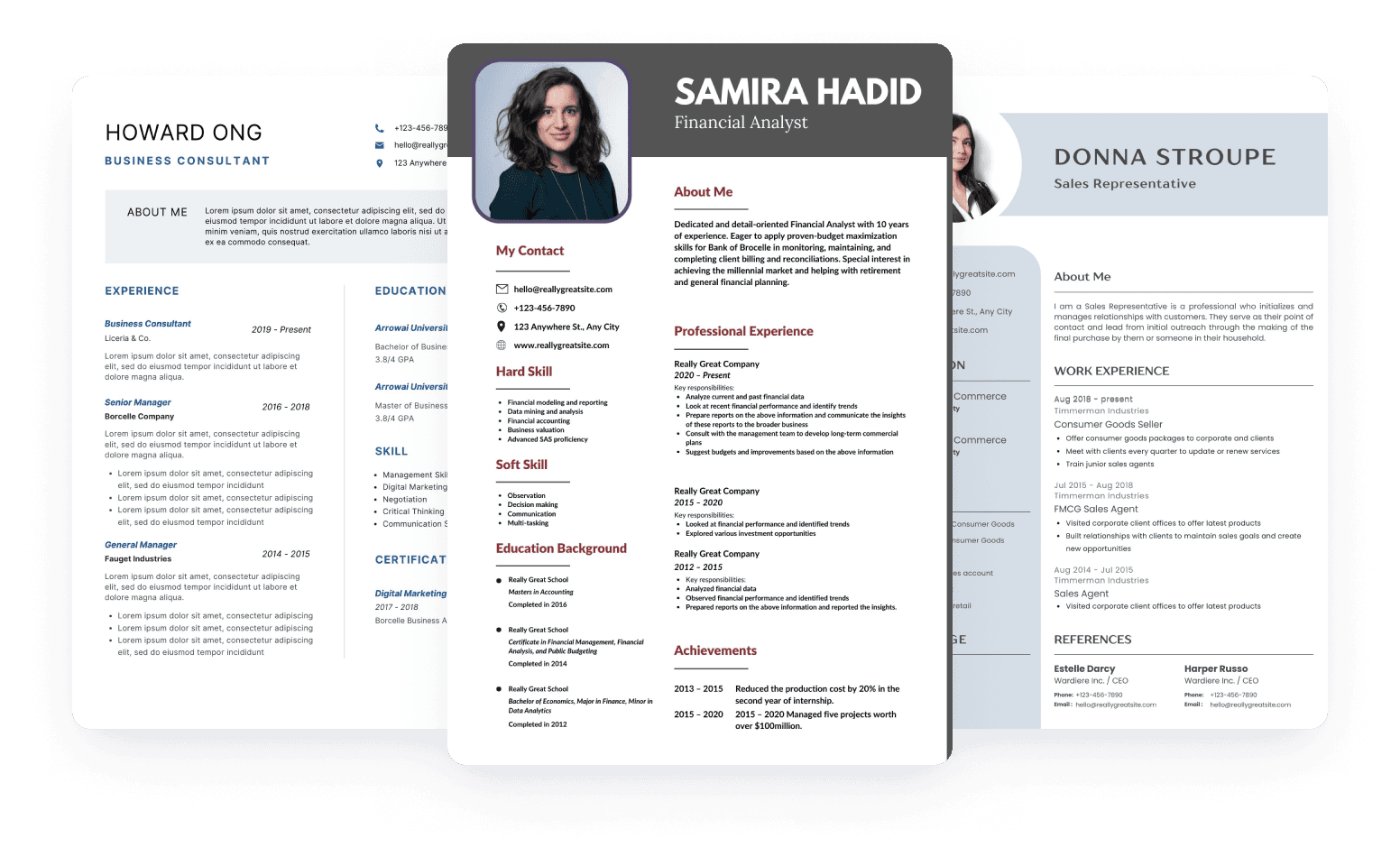
Build Your Resume
Truresume offers free Resume Templates to help you craft a professional resume quickly and easily.

Build Your Resume
Truresume offers free Resume Templates to help you craft a professional resume quickly and easily.

Our Featured Articles

resume
Best Resume Format for Freshers in 2025: Your Ultimate Guide to Getting Noticed
3 Jun 2025

ATS
Why TruResume ATS Friendly Resume Builder Tools Are Best for Resume Building
3 Jun 2025

Resume
Why ATS-Friendly Resumes Are Important to Pass Initial Screening
3 Jun 2025

Resume
What’s the Difference Between CV and Resume?
3 Jun 2025

Resume
How to Write a Resume for Freshers with No Experience
3 Jun 2025

Resume
What to Include or Not in Resume 2025 as a Fresher
3 Jun 2025
Our Featured Articles

resume
Best Resume Format for Freshers in 2025: Your Ultimate Guide to Getting Noticed
3 Jun 2025

ATS
Why TruResume ATS Friendly Resume Builder Tools Are Best for Resume Building
3 Jun 2025

Resume
Why ATS-Friendly Resumes Are Important to Pass Initial Screening
3 Jun 2025

Resume
What’s the Difference Between CV and Resume?
3 Jun 2025
Our Featured Articles

resume
Best Resume Format for Freshers in 2025: Your Ultimate Guide to Getting Noticed
3 Jun 2025

ATS
Why TruResume ATS Friendly Resume Builder Tools Are Best for Resume Building
3 Jun 2025

Resume
Why ATS-Friendly Resumes Are Important to Pass Initial Screening
3 Jun 2025

Resume
What’s the Difference Between CV and Resume?
3 Jun 2025
FAQ's Related to Resume Templates
Have a question for us ? Find your answers here !
FAQ's Related to Resume Templates
Have a question for us ? Find your answers here !
FAQ's Related to Resume Templates
Have a question for us ? Find your answers here !
What is Resume Templates?
A resume template is a pre-designed format that provides a well structured layout for creating a professional resume for the beginner and the experienced. It includes sections for contact information, work experience, education, skills, and more. By Using our free resume templates you can design your resume to showcase your skills and education.
What is Resume Templates?
A resume template is a pre-designed format that provides a well structured layout for creating a professional resume for the beginner and the experienced. It includes sections for contact information, work experience, education, skills, and more. By Using our free resume templates you can design your resume to showcase your skills and education.
What is Resume Templates?
A resume template is a pre-designed format that provides a well structured layout for creating a professional resume for the beginner and the experienced. It includes sections for contact information, work experience, education, skills, and more. By Using our free resume templates you can design your resume to showcase your skills and education.
Why should I use a resume template?
Why should I use a resume template?
Why should I use a resume template?
Are your resume templates ATS-friendly?
Are your resume templates ATS-friendly?
Are your resume templates ATS-friendly?
Do you offer industry-specific resume templates?
Do you offer industry-specific resume templates?
Do you offer industry-specific resume templates?
How do I choose the right resume template?
How do I choose the right resume template?
How do I choose the right resume template?
How many pages long should my resume be?
How many pages long should my resume be?
How many pages long should my resume be?
Is there a cost for using your resume templates?
Is there a cost for using your resume templates?
Is there a cost for using your resume templates?
Do you offer support if I need help?
Do you offer support if I need help?
Do you offer support if I need help?